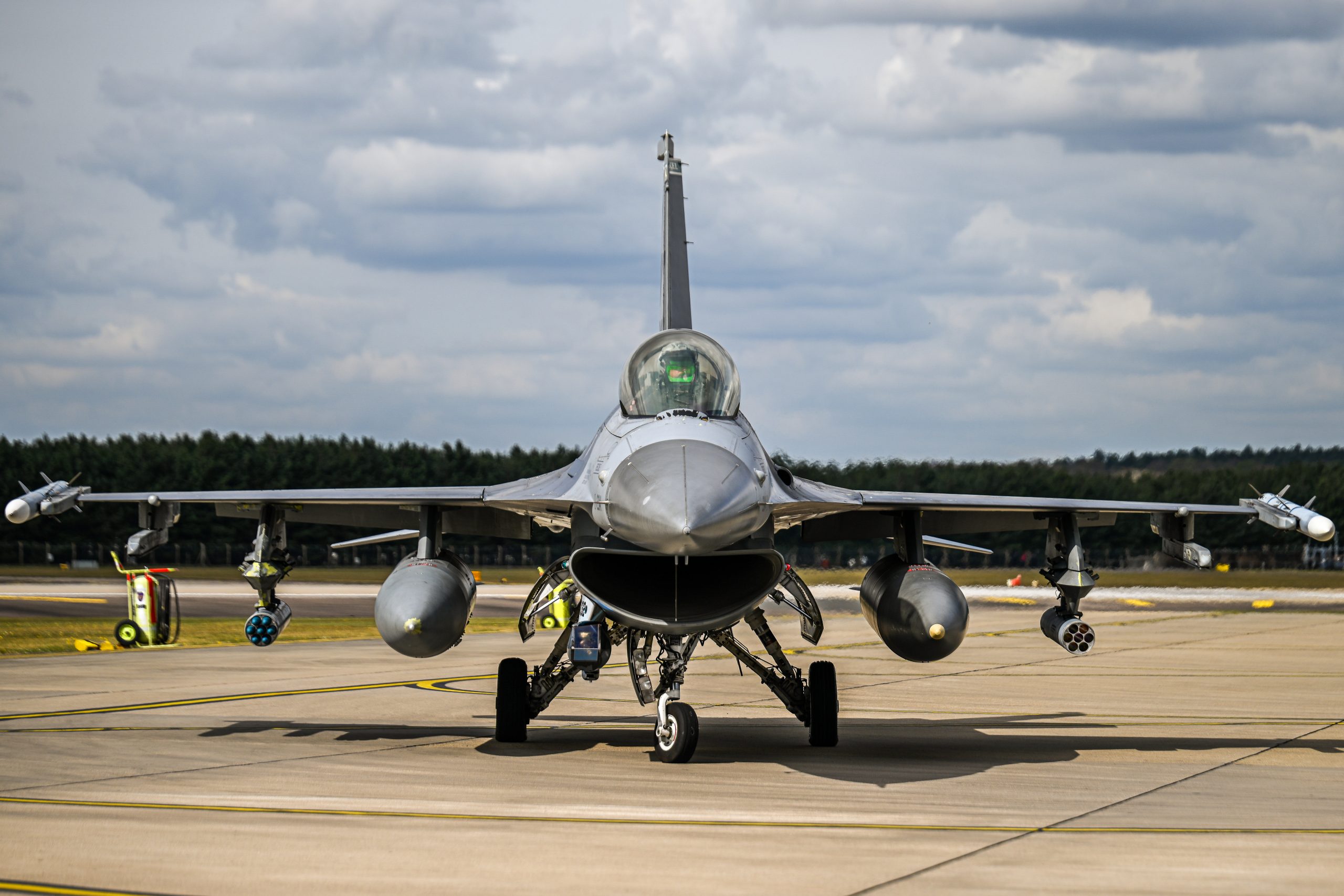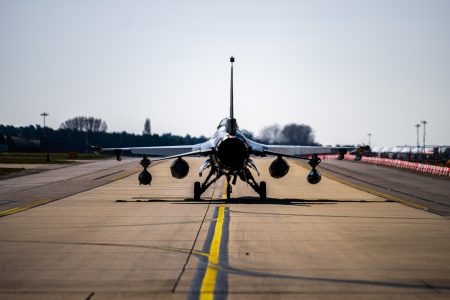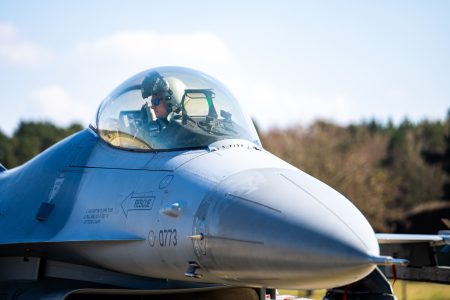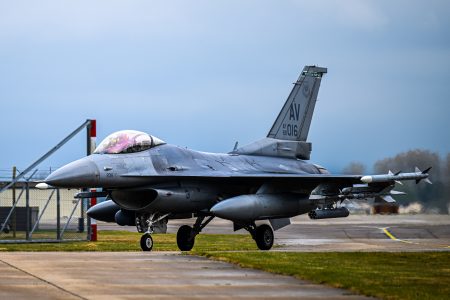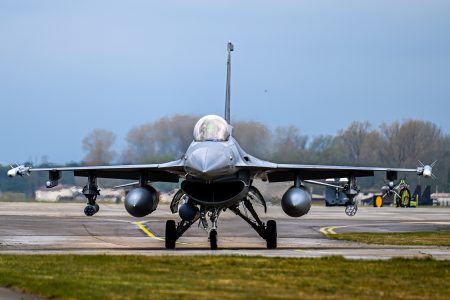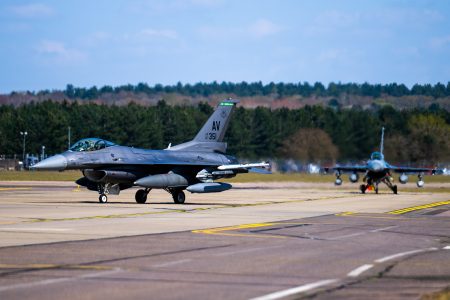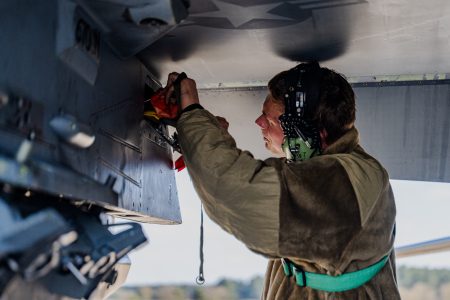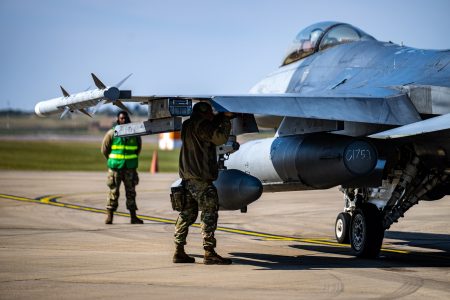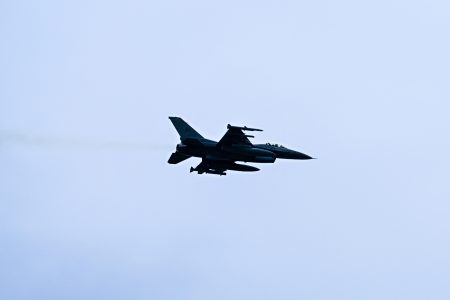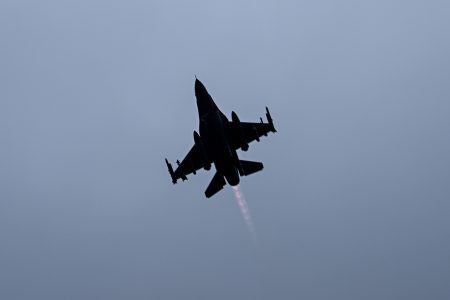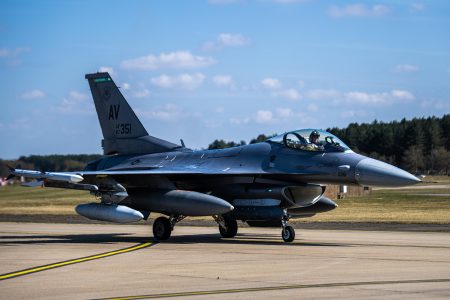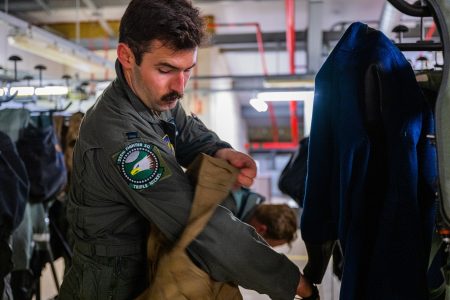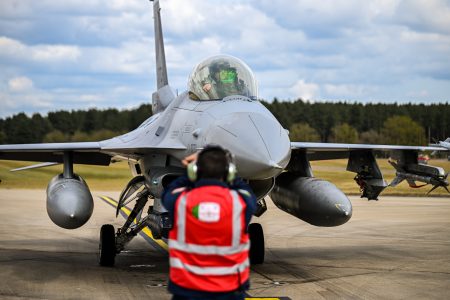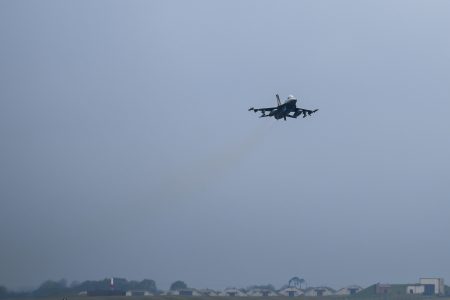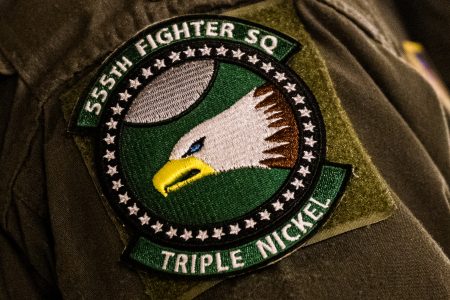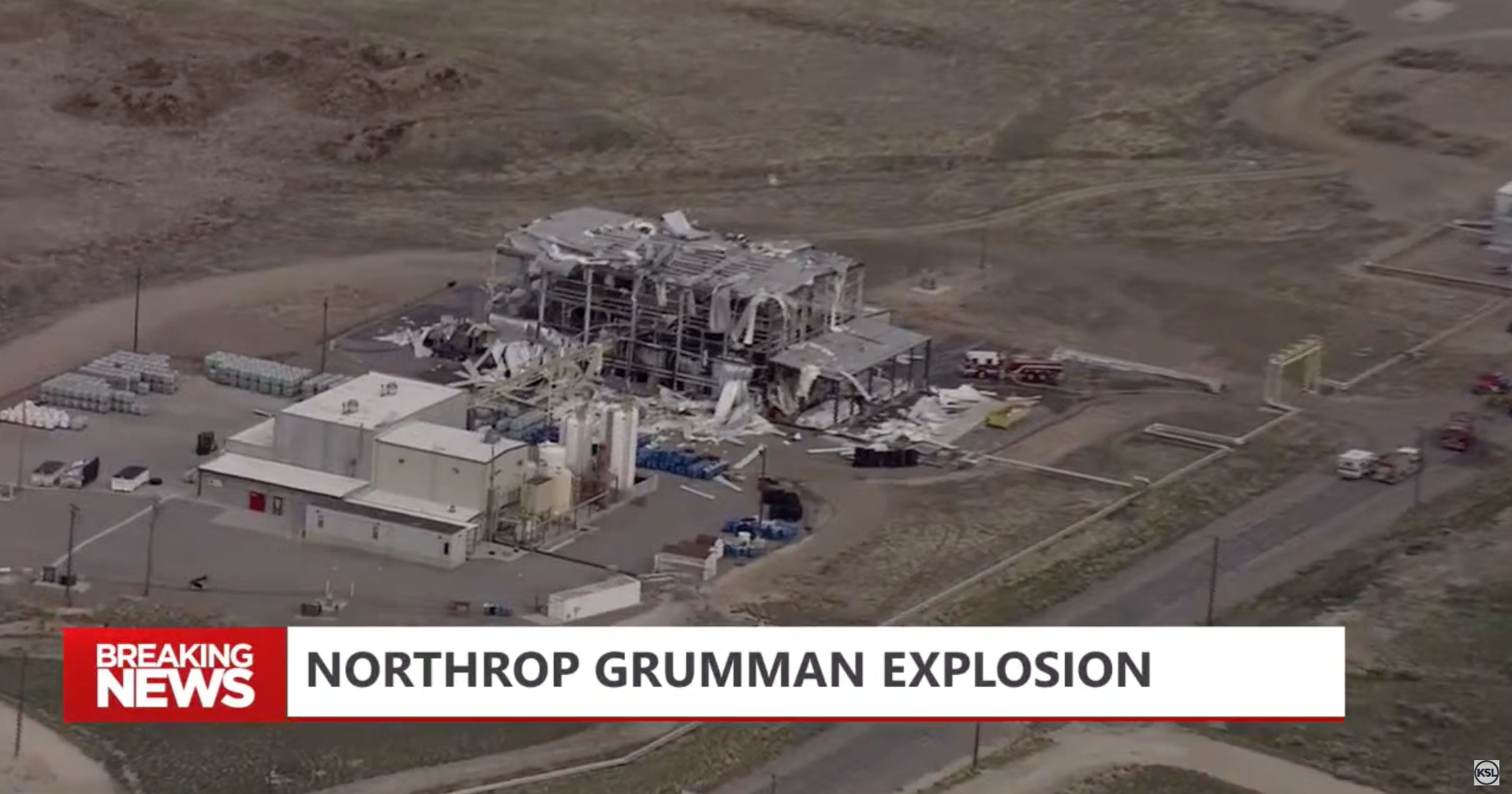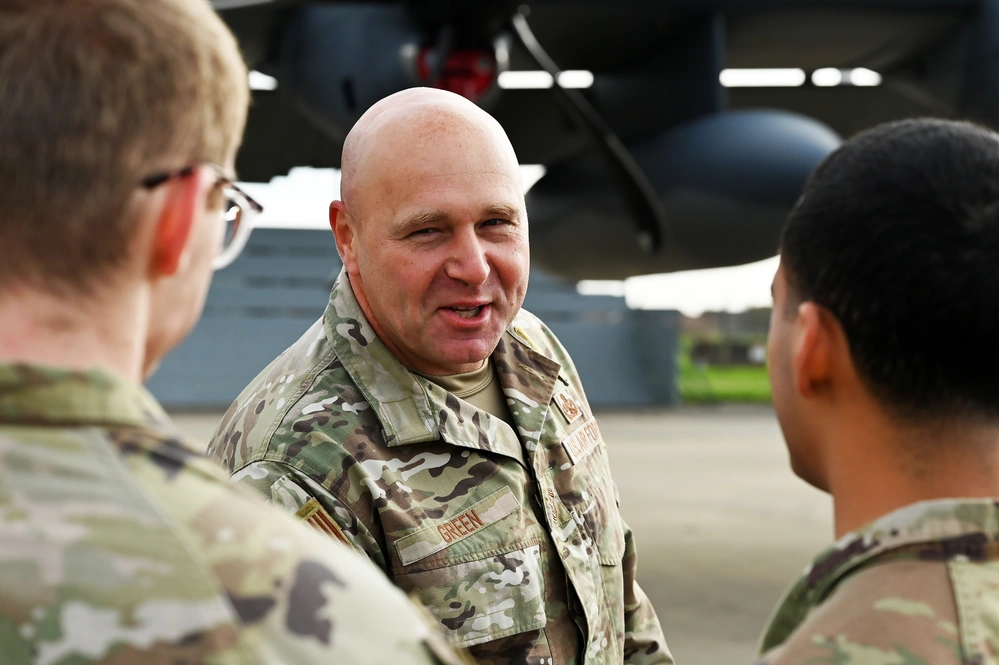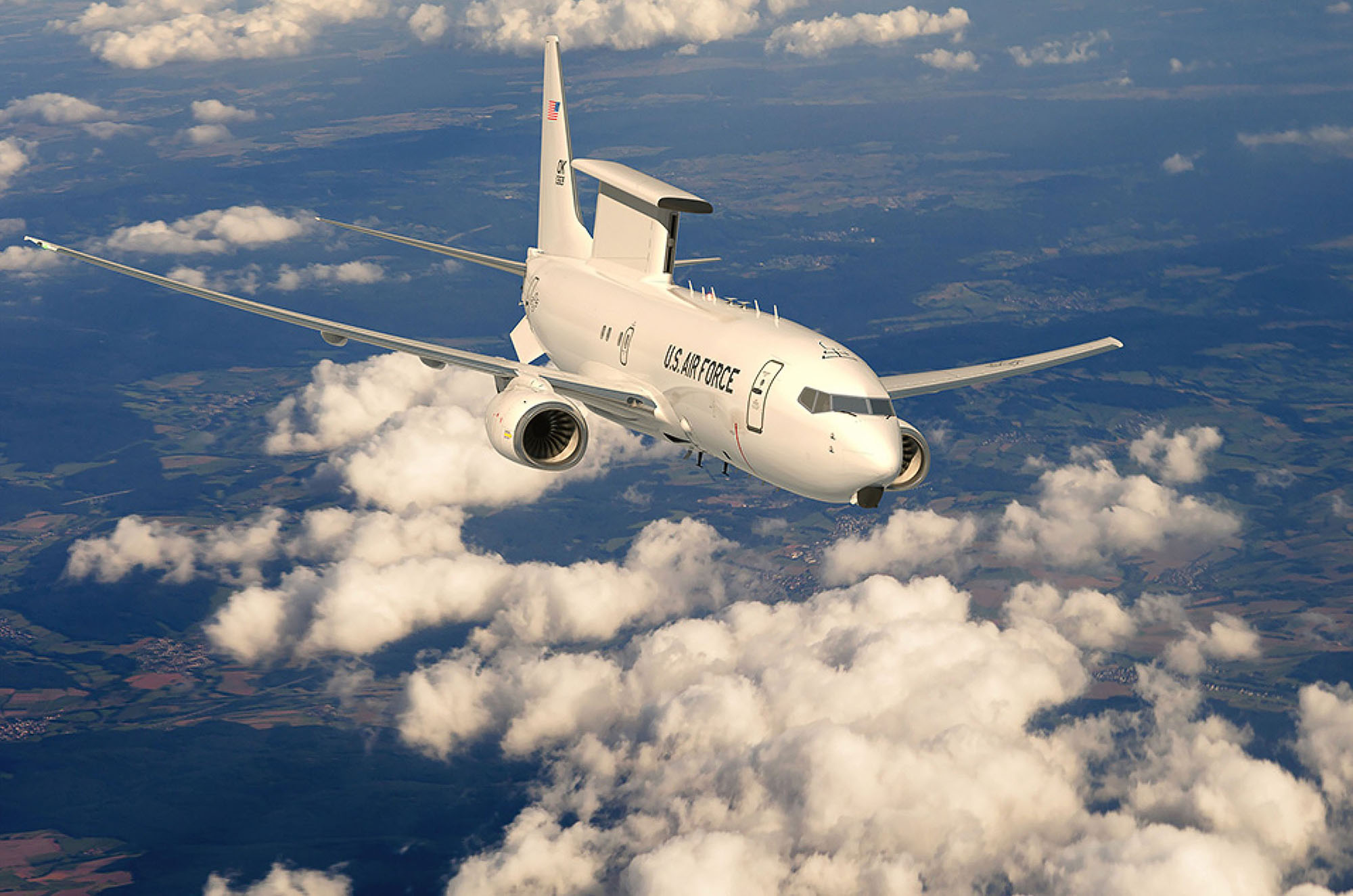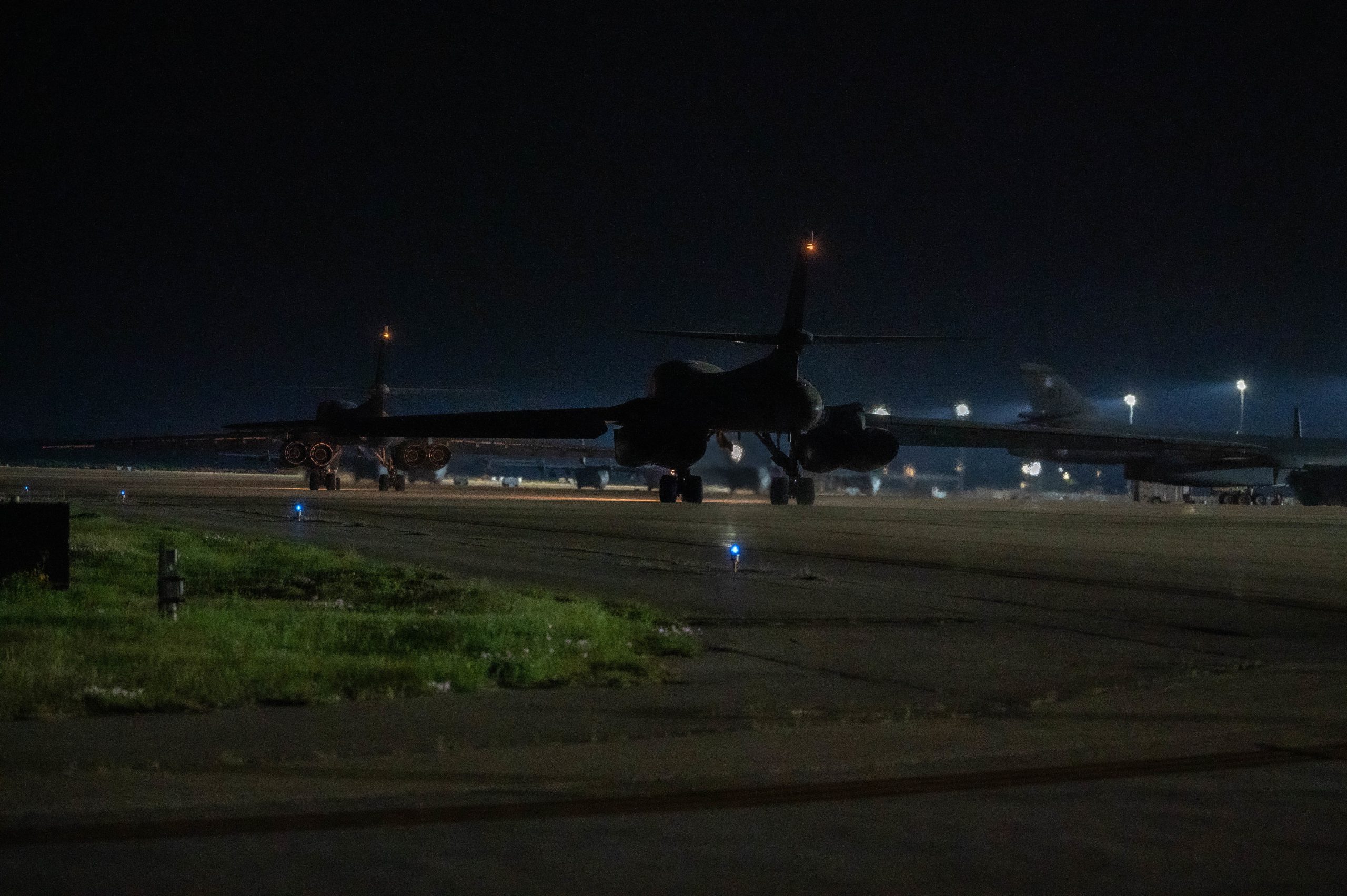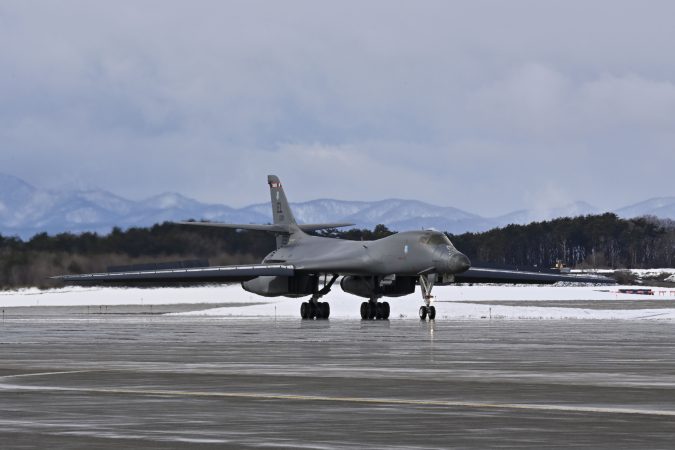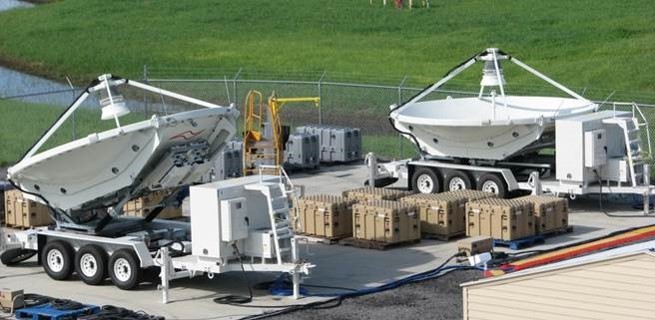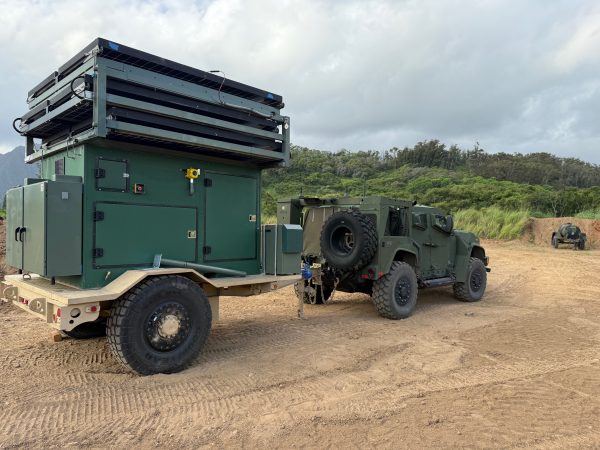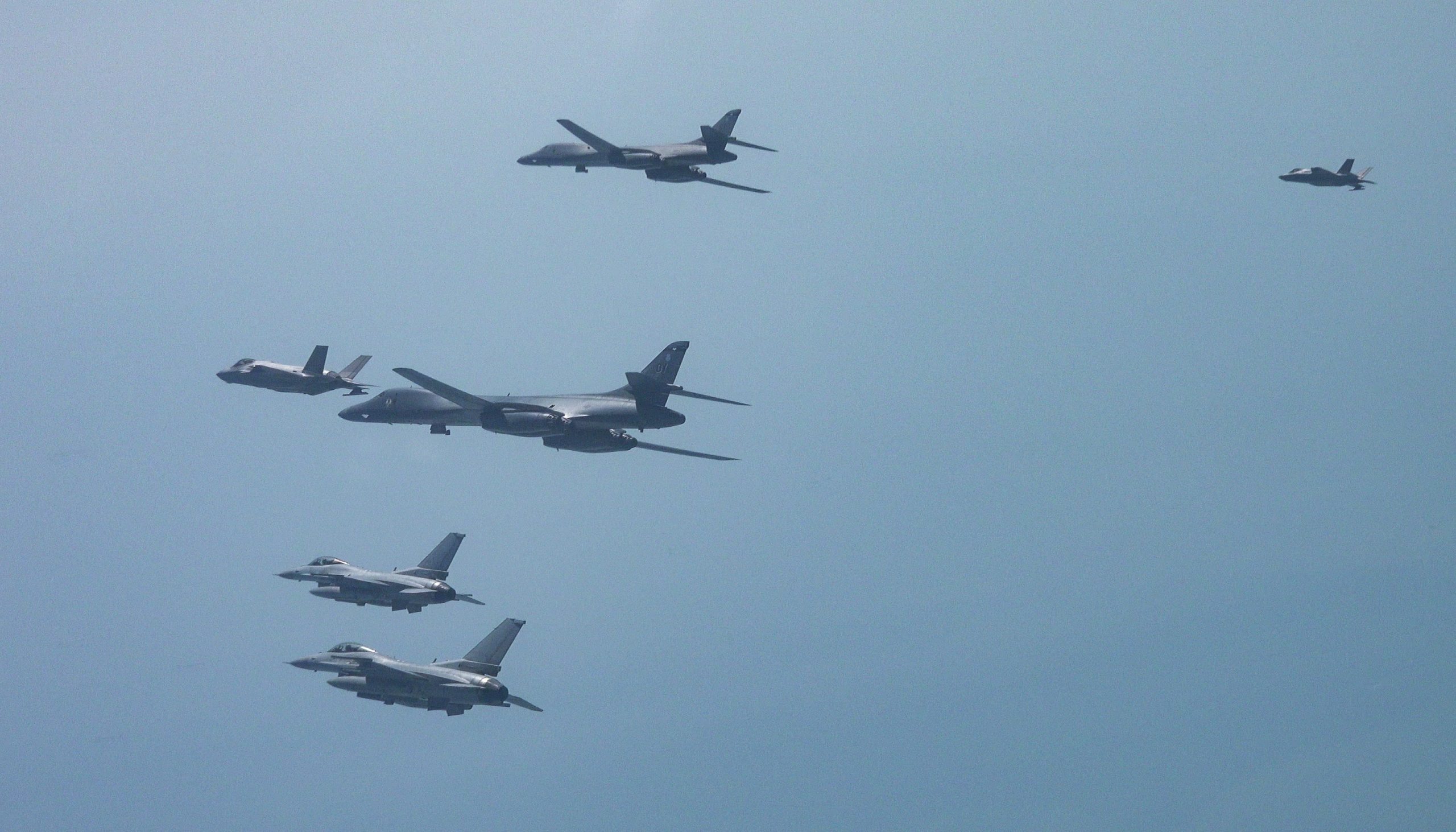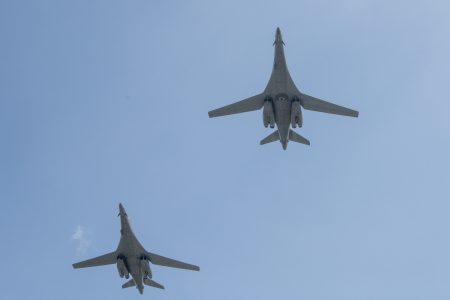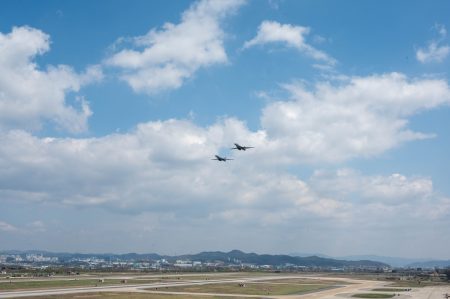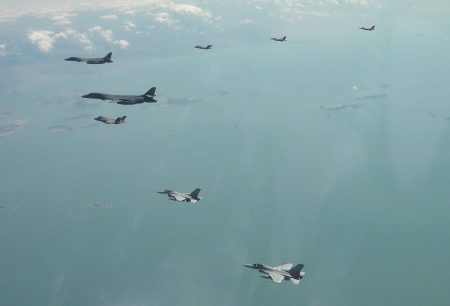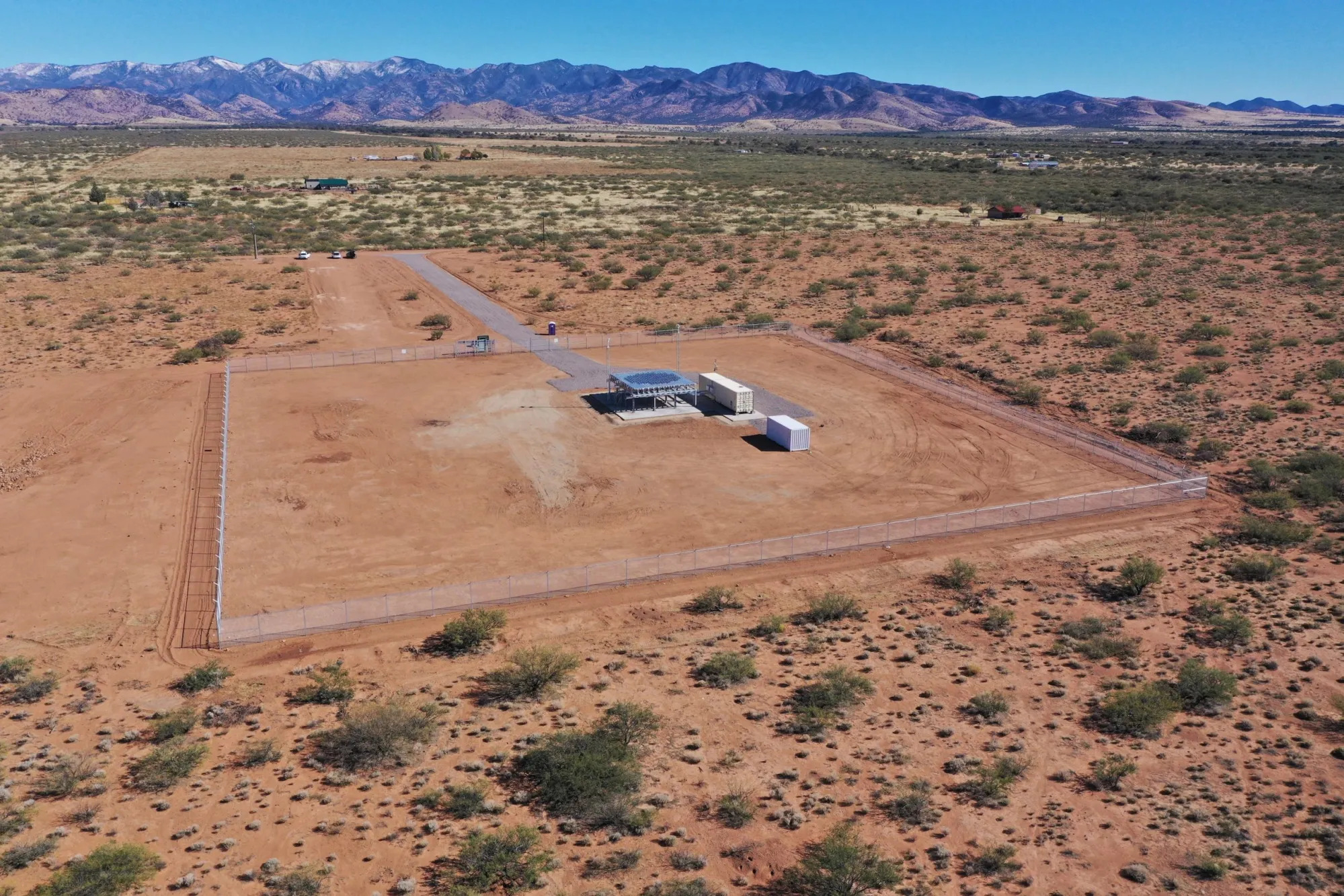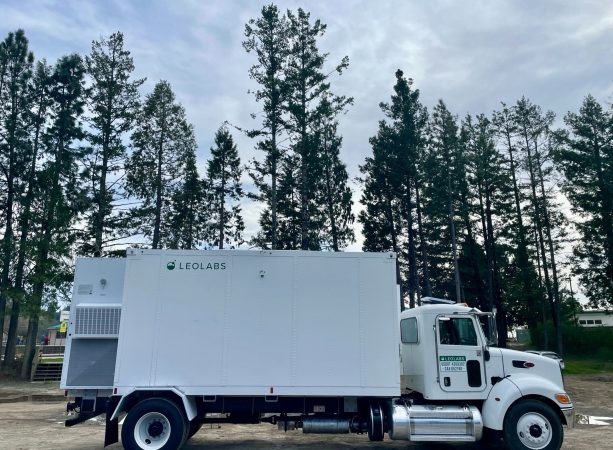U.S. Air Forces in Europe is using one of its premier F-16 squadrons to develop and practice new tactics and weapons to counter drones.
The exercise stems from the service’s experience in the Middle East, fighting off Iranian and Houthi attacks.
The 555th Fighter Squadron, based at Aviano Air Base, Italy, participated in the Weapons System Evaluation Program (WSEP) exercise this month in the United Kingdom. The exercise, commonly known as Combat Archer, is typically held in the United States at ranges at Tyndall Air Force Base, Fla., and Hill Air Force Base, Utah.
Air Force experts were on hand to assess the air-to-air performance of the squadron.
In a statement, U.S. Air Forces in Europe boss Gen. James B. Hecker said hosting the exercise in the U.K. saves millions of dollars and provides much-needed training for its units in what it hopes is a repeatable model.
Traveling to the U.S. for training would normally cost millions of dollars—likely cost-prohibitive as a standalone exercise—and require tanker and airlift support to get equipment and personnel across the Atlantic, USAFE officials said.
“Holding the exercise in the European area of responsibility provides significant strategic advantages, reducing the need for transatlantic aircraft movements, and resulting in substantial cost savings,” Hecker said.
Over seven days of flying this month, the F-16s from the 555th or “Triple Nickle” Fighter Squadron flew approximately 70 sorties, firing off around 10 AIM-9M Sidewinder missiles and over 60 rockets at target drones at the U.K.’s MOD Aberporth range on the west coast of Wales near Cardigan Bay, a USAFE spokesperson said.
The squadron practiced on Banshee Jet 80 and Banshee Whirlwind drones from the British company QinetiQ, a defense tech company that operates the drones and ranges. That’s different from previous Combat Archer exercises in the U.S., which use the QF-16—old F-16s turned into unmanned targets—and the BQM-167A, another high-performance target drone.
“We don’t really want to shoot at a threat that is representative of a jet. We’re looking to shoot at things that are smaller and that are a better threat representation,” Lt. Col. Eric “Diesel” Kitaif, the commander of the 555th Fighter Squadron, told Air & Space Forces Magazine in a video interview.
“They’re much smaller with a lower infrared signature than the traditional drones that people shoot at Archer,” Kitaif said. “For what I am trying to train my squadron to do, the threat that we are fighting out here is perfect. They’re slow, they’re hard to detect with the radar, they’re low IR signature. We actually get to see all those things and we’ve learned a lot from fighting those two threats.”
Pilots, weapons, and maintenance personnel and equipment from Aviano’s 31st Fighter Wing deployed to RAF Lakenheath in Suffolk, England, for the exercise, including:
- 555th Fighter Squadron
- 555th Fighter Generation Squadron
- 31st Logistics Readiness Squadron
- 31st Munitions Squadron
- 31st Maintenance Squadron
- 31st Operations Support Squadron.
The rocket system being tested is the AGR-20 Advanced Precision Kill Weapon System (APKWS)—Hydra-70 rockets that have been converted with a laser guidance kit to turn them into precision-guided munitions. It was designed for air-to-ground use but has been used to shoot down Houthi drones in the past year, U.S. officials previously told Air & Space Forces Magazine.
The rockets cost less than $40,000, the officials say, a significant advancement in driving down the cost of defeating the hundreds of drone attacks in the Middle East. To shoot down drones, the Air Force has previously used AIM-120 AMRAAM medium-range radar-guided missiles, which cost roughly $1 million each, or short-range AIM-9 Sidewinders, which carry a price tag of hundreds of thousands of dollars depending on the variant, with the costly AIM-9X model commonly used by the USAF.
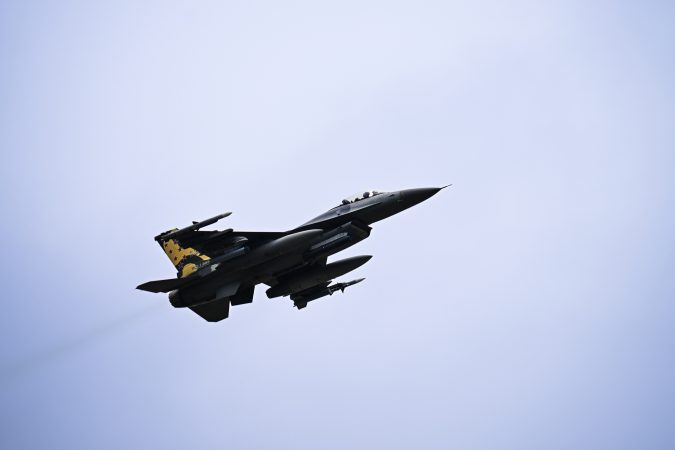
“We’re training to a new threat and a new weapon to handle that threat,” Kitaif said.
To judge the exercise, the 83rd Fighter Weapons Squadron from Tyndall brought a 33-person team, fulfilling a pre-deployment air-to-air weapons employment evaluation requirement for the 555th Fighter Squadron, a spokesperson for U.S. Air Forces in Europe said. USAFE has often provided combat airpower in the Middle East in recent years, including F-16s from Aviano’s 510th Fighter Squadron and the 555th Fighter Squadron.
”We want to learn while we’re here. WSEP is evaluating us, but in my book, we are training,” Kitaif said.
“Most of us have never shot a missile,” he added. “So getting to see that, in and of itself, is a training opportunity you don’t get anywhere. And that can directly translate to combat.“
The F-15E Strike Eagles from the 48th Fighter Wing at Lakenheath helped defeat Iran’s attack on Israel in April alongside other U.S. Air Force and coalition aircraft, downing dozens of drones. The drone threat is also a real-world concern in Europe, as Russia has used some of the same types of drones seen in the Middle East to attack Ukrainian troops, infrastructure, and cities.
“We were deployed just before them,” Kitaif said of the 48th Fighter Wing. “We were also tasked to do this type of defense against the one-way attack drones. … We did not have the opportunity for the training prior to go to actually see what it would look like in our targeting pod, to run an intercept against something that is that difficult to attack at air speed and shoot missiles at it. Back then, we were loaded up with AIM-9Xs, ready to attack one-way attack drones. Now we are training to the AGR-20 FALCO system. I can carry a lot more of them, and they’re much, much more cost-effective against one-way attack drones.”
One drone was shot down with an AIM-9M, but most shots did not use live warheads and were instead “kinematic” kills so the drones can be reused, a USAFE spokesperson said.
Some Air Force F-16s in the Middle East have been seen fitted with infrared targeting pods and one or two Hydra rocket pods, as well as AMRAAMs and AIM-9s—F-16s can carry 14 rockets per station, up to 28 rockets. To guide an APKWS rocket, the target must be laser-designated or “lazed,” unlike more expensive “fire-and-forget” missiles. This means air-to-air use of the rocket pods is most suited to defeating slow-flying targets such as one-way attack drones. That’s practice the 555th Fighter Squadron needs.
“Employing these is challenging to do,” Kitaif said. An F-16 can employ the rockets on its own, but it must laze the target and fire the rocket, so multiple F-16s make the job easier.
“I need to put it in the right regime, and I need to make sure that there is laser energy on the target. And so getting both of those things to happen can be challenging to be the person both employing the munition and the person lazing that munition,” Kitaif said. “None of us have ever trained to [use rockets] air-to-air, and almost all of us have never trained to it air-to-ground either. So it’s beneficial to be able to carry these out here and get to train to it.”
